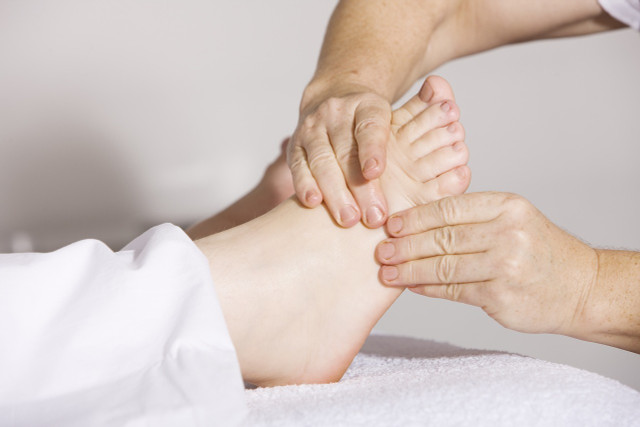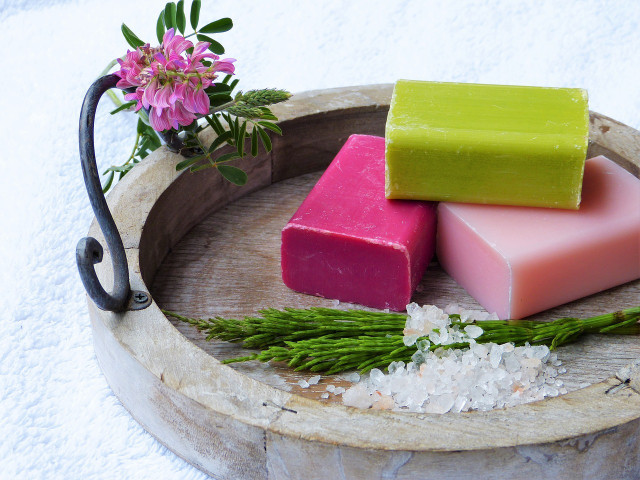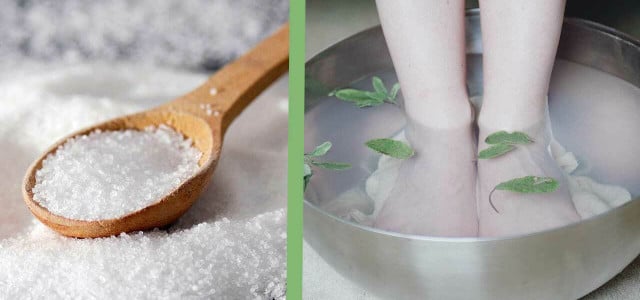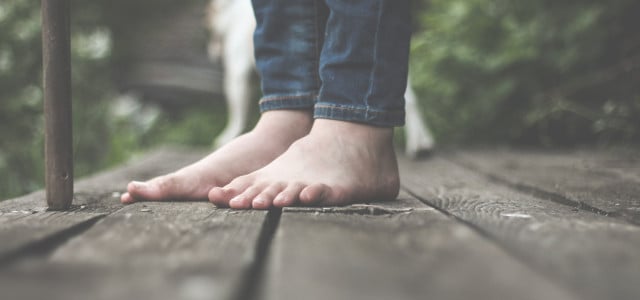An Epsom salt foot soak is a kind of mineral bath with many purported benefits. Read on to learn more about the myth and the science behind this treatment.
Epsom salt foot soaks have been used to treat sore feet for many centuries. Its proponents claim that this treatment has a host of benefits, not only for the body but also for the mind. Although Epsom salt itself has been scientifically proven to have many benefits, there is not enough research for foot soaks specifically to know if all of these benefits are relevant for this treatment. Below, you can learn more about the effects of Epsom salt foot soaks and how you can prepare one for yourself.
What Is an Epsom Salt Foot Soak?

(Foto: CC0 / Pixabay / LoggaWiggler)
A basic Epsom salt foot soak consists of Epsom salt dissolved into a tub filled with warm water. Although its name may be misleading, Epsom salt is not a true salt (sodium sulfate) — rather, it is a chemical compound known more formally as magnesium sulfate. It gets its name from the fact that it was first discovered in Epsom, England, and from its salt-like appearance.
In addition to these basic ingredients, Epsom salt foot soak recipes can also include scented ingredients such as essential oils. Since essential oils can sometimes cause allergic reactions, you should always test your reaction to them before use by placing a few drops on your wrist.
Epsom salt foot soaks have traditionally been used for treating sore feet. It has been said to relieve muscle pain and aid recovery after an injury.
Proponents of Epsom salt often focus on its magnesium component to explain its medical properties.
- Indeed, magnesium is essential for many bodily systems, including metabolism, hormone regulation, and protein synthesis.
- One study conducted by researchers from several universities in Taiwan found that magnesium supplementation could aid healing after nervous system damage.
- Additionally, magnesium seems to have an effect on mental and neurological wellbeing. Scientists have observed magnesium deficiencies in individuals with severe depression, and supplementation seems to relieve symptoms.
Learning about the effects of magnesium alone may make Epsom salt foot soaks sound effective. However, the way that compounds are absorbed through the skin is different from the way they are absorbed after oral administration. This means that the findings of the studies above, which focus on increased magnesium in the diet, may not reflect the effects of magnesium exposure in a foot soak. Although research in this area is still limited, there are a few studies that may point to the clinical benefits of Epsom salt foot soaks.
What Are the Effects of an Epsom Salt Foot Soak?



(Foto: CC0 / Pixabay / andreas160578)
The scientific studies that are currently available suggest that Epsom salt foot soaks are in fact beneficial for soothing sore feet. Most of these studies have focused on the effects of foot soaks for treating certain medical conditions.
- For example, one study conducted on patients with osteoarthritis found that Epsom salt foot soaks could relieve symptoms such as joint pain.
- Similarly, another study conducted on diabetic patients with lymphedema found that Epsom salt foot soaks could reduce swelling in the legs and feet.
- Both of these findings suggest that the foot soaks can really reduce pain and swelling for individuals who experience foot pain, just as traditional users have suggested.
While these benefits are much more limited compared to studies supplementing magnesium through the diet, the good news is that the external use of Epsom salts also avoids many of the dangerous side effects of oral administration. Consuming too much magnesium can cause diarrhea, breathing difficulties, and with very high levels, even death. In contrast, the use of Epsom salt for skin can cause irritation, but there does not appear to be documentation of severe negative side effects. It’s therefore a good idea to test your skin to see if it is compatible with Epsom salt before soaking, but it is unlikely that you will experience severe distress from usage.
How to Prepare an Epsom Salt Foot Soak



(Foto: CC0 / Pixabay / silviarita)
Treating yourself to an Epsom salt foot soak can be a great way to unwind after a long week, especially if your work involves lots of standing. You only need Epsom salt and warm water, but you may want to add something scented like essential oils (after testing), or dried flowers like lavender or rose petals. When you are choosing which Epsom salt to use, make sure to look out for the USP (United States Pharmacopeia) label on the packaging, which signals that it is food grade, rather than for agricultural usage. For example, Sky Organics Epsom Salt, available on Amazon**, lists that it uses USP-grade magnesium sulfate, and is also cruelty-free and vegan.
Once you have chosen your ingredients, follow these steps:
- Pour one cup of Epsom salt into your bath or a small tub.
- Add warm water until it is deep enough to cover your feet and ankles.
- Add any scented ingredients, if you would like.
- Soak your feet for 30-60 minutes once or twice a week.
By following these steps, you can add a relaxing Epsom salt foot soak to your self-care routine, improving both your foot health as well as your mental well-being.
Read more:
- Apple Cider Vinegar Foot Soak: Remedy for Calluses and Swollen Feet
- Sitting Position: 12 Tips for Proper Posture
- 5 Benefits of Gargling with Salt Water: How to Cure a Sore Throat
Do you like this post?








